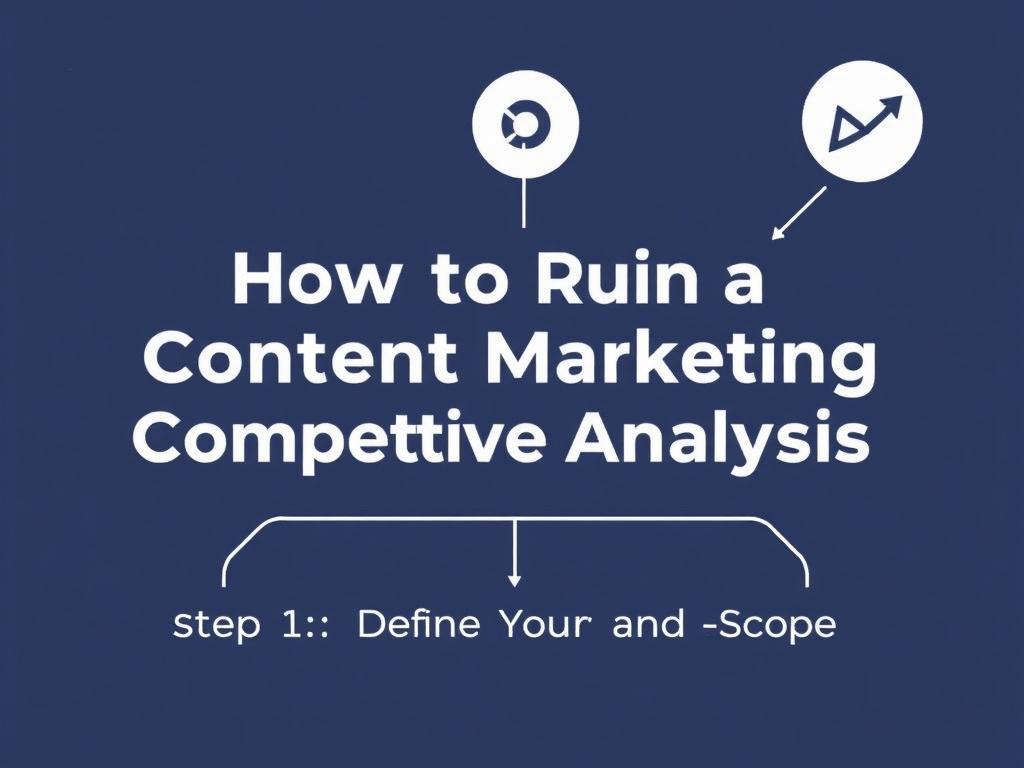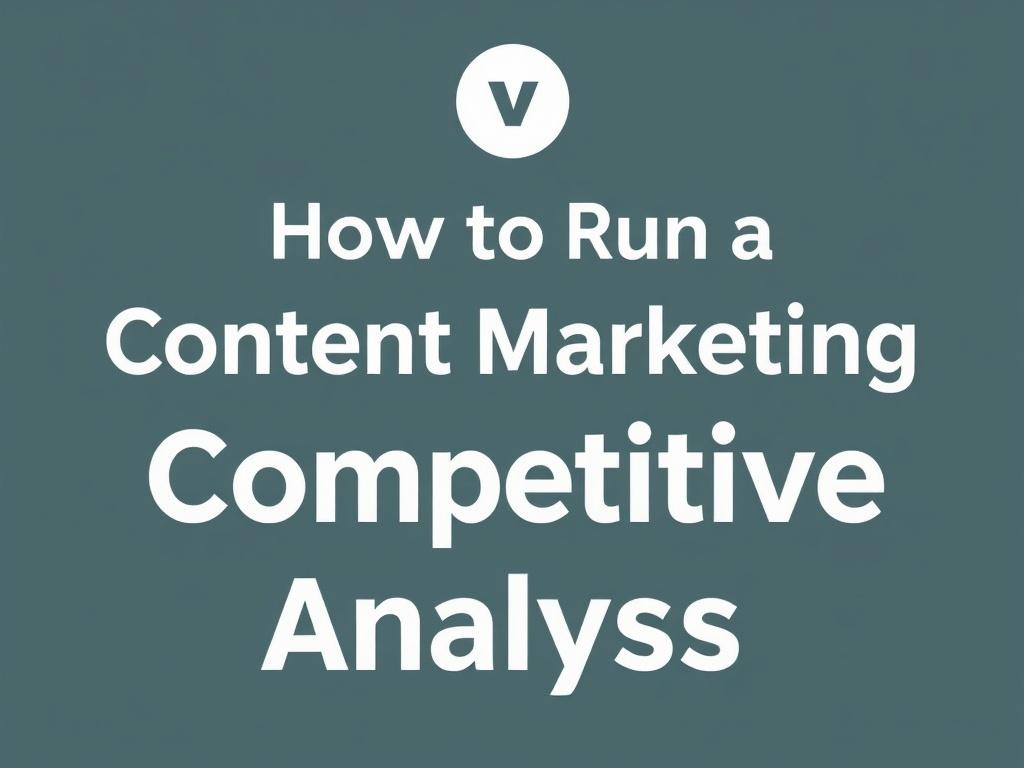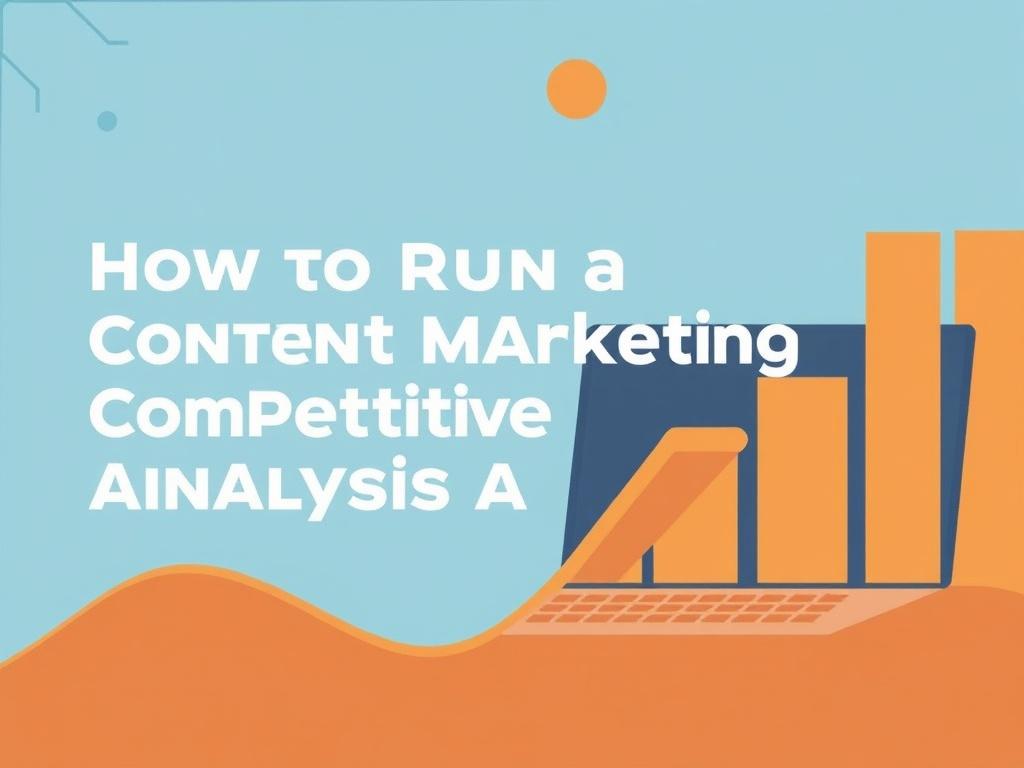If you’ve ever wondered why your carefully crafted content doesn’t get the traction you expect, you are not alone. Content marketing today is noisy, crowded, and competitive. Doing great content isn’t just about producing the best blog post or video — it’s about understanding the landscape around you: who else is talking to your audience, what formats they use, which channels work, and where the gaps are. A content marketing competitive analysis helps you answer those questions and build a plan that wins attention, leads, and long-term authority.
In this guide I’ll walk you through a practical, step-by-step competitive analysis you can run yourself or with a small team. We’ll cover everything from defining goals and finding competitors to gathering the right data, scoring what matters, and building a prioritized action plan. I’ll include templates, tables, and checklists so you can implement each step. Read it through or jump to the section you need — either way you’ll leave with a repeatable process you can use quarterly or whenever the market shifts.
Why a Competitive Analysis Matters
Competitive analysis isn’t espionage — it’s intelligence. When you understand how competitors structure their content, where they succeed and where they fail, you can make smarter bets. Instead of guessing which topics will attract the right visitors, you base decisions on observed performance and audience signals. That reduces wasted effort and increases the chance your content both ranks and converts.
This kind of analysis also helps you align content with business goals. It surfaces which channels are actually working for similar brands, shows the formats that earn links and shares, and reveals pricing pages, demos, or lead magnets that compete directly with your offers. Ultimately, a good competitive analysis gives you a map of the content battlefield so you can deploy resources where you’ll win.
Step 1: Define Your Goals and Scope

Start by clarifying what you want the analysis to achieve. Are you trying to grow organic traffic, increase leads from mid-funnel content, improve product adoption with help-center content, or benchmark brand authority? Your goals determine what data to collect and how deep to go.
Ask a few concrete questions to set scope:
- What are the top business objectives this content needs to support?
- Which competitor set matters: direct competitors, aspirational brands, or content-first publishers?
- How much time and budget can you allot: a quick audit or a deep analysis?
- Which markets and languages should be included?
If you’re new to this, start narrow — one product line or one content pillar — and expand over time. If your business has multiple verticals, run separate analyses for each to keep findings actionable.
Set measurable objectives
Translate goals into metrics. For example:
- Increase organic visits to the “product guides” section by 40% in six months.
- Capture 50 new marketing-qualified leads per month from gated content.
- Reduce churn by improving help documentation and reducing support tickets by 10%.
These targets will guide the scoring and prioritization later in the process.
Step 2: Identify Your Competitors
“Competitor” means different things depending on the question. Direct competitors sell the same product; indirect competitors offer substitutes; content competitors simply capture the attention of your audience. Identify all three types.
Ways to find competitors:
- Ask your sales and customer success teams who prospects compare you to.
- Search core keywords and see who ranks in the top 10 organic results.
- Inspect paid search ads for your target terms — advertisers are often competitors.
- Use social listening and content discovery tools to see who your audience follows or shares.
Capture an initial list and then pare it down to a manageable set (five to ten) for deep analysis.
Direct vs Indirect vs Content Competitors
Organize competitors into categories to focus your analysis:
| Competitor Type | Who They Are | Why They Matter |
|---|---|---|
| Direct | Companies offering the same product or service | They target the same buyers and use similar messaging |
| Indirect | Brands offering alternatives or substitutes | They capture audience attention and budget in adjacent buying paths |
| Content | Publishers, blogs, or influencers dominating topic conversations | They attract the audience you need and often rank for topical searches |
Labeling competitors helps you compare apples to apples during analysis.
Step 3: Gather the Right Data
A good analysis blends qualitative observations with quantitative metrics. Think of two buckets: on-site content attributes (what they publish, how content is structured) and off-site signals (traffic, backlinks, social engagement). Use a combination of manual review and tools to collect data.
Useful tools and what to use them for:
| Tool | Primary Use | Notes |
|---|---|---|
| Google Search & Incognito | Spot-check rankings and SERP features | Good for contextual view of search results |
| Google Analytics / GA4 | Traffic sources and on-site behavior (your site) | Helps compare your content KPIs vs. target |
| Ahrefs / SEMrush / Moz | Keyword rankings, backlinks, traffic estimates | Essential for organic performance benchmarking |
| BuzzSumo / SharedCount | Social shares and content virality | Shows which formats resonate on social platforms |
| SimilarWeb | Traffic sources and audience behavior (estimates) | Good for competitor traffic channel breakdowns |
| Canva / Lighthouse | Visual audits, page loading and technical observations | Useful for UX and technical speed checks |
On-site content audit checklist
When you open a competitor’s content hub or blog, capture specific attributes to enable apples-to-apples comparisons:
- Content title and URL
- Publish date and update frequency
- Content length (word count) and depth
- Primary keywords and topic cluster
- Content format (article, list, guide, case study, video, infographic)
- Calls-to-action (CTAs) and lead capture mechanisms
- Internal linking and structure (pillar pages, topic clusters)
- Visuals and layout (images, charts, embedded media)
- Comments and social proof
Record these in a spreadsheet so you can sort, filter, and score later.
Off-site signals and backlink audit
Backlinks and social traction signal authority. For each competitor, collect:
- Estimated organic traffic and top landing pages.
- Number and quality of referring domains (use Ahrefs/SEMrush).
- Top anchor texts and linking pages.
- Most-shared pieces on social networks (BuzzSumo, SharedCount).
- Paid search activity and visible ad copy.
These data help you understand whether competitors rank because of great content, strong link profiles, or paid amplification.
Step 4: Analyze Content Strategy and Performance
Now that you have raw data, it’s time to make sense of it. Analysis answers questions like: Which topics are winning? What formats get shared? Which pages drive the most organic traffic? Use frameworks and scoring to compare competitors consistently.
One helpful approach is to evaluate competitors across core dimensions:
- Topical coverage and relevance
- Content quality and depth
- SEO strength (rankings and backlinks)
- Content formats and multimedia use
- Distribution and amplification
- User experience and conversion design
Build a simple competitor scorecard
Create a scorecard with weighted metrics so you can rank competitors and identify where to focus. Adjust weights based on your goals (e.g., if organic traffic matters most, give SEO and backlinks higher weight).
Example scorecard template:
| Metric | Weight | Competitor A | Competitor B | Competitor C | Your Site |
|---|---|---|---|---|---|
| Topical Coverage | 20% | 8 | 7 | 9 | 6 |
| Content Depth & Quality | 20% | 7 | 9 | 6 | 5 |
| SEO / Organic Traffic | 20% | 9 | 6 | 7 | 5 |
| Backlinks & Authority | 15% | 8 | 5 | 9 | 4 |
| Social Engagement | 10% | 6 | 8 | 7 | 5 |
| Conversion Design / CTAs | 15% | 7 | 6 | 8 | 6 |
Give each metric a score from 1–10. Multiply by weight and sum to get a final ranking. This helps you see whether competitors are strong across the board or excel in one specific area.
Qualitative signals to notice
Numbers don’t tell the whole story. While scoring, observe qualitative differences:
- Is their tone more conversational or authoritative?
- Do they use original research, case studies, or only surface-level content?
- Are they building a recognizable brand or purely transactional content?
- Do they repurpose content across video, slides, and long-form posts?
These subtle patterns often indicate sustainable advantages versus one-off tactics.
Step 5: Map Content Formats and the User Journey
Content should meet people where they are in the buying journey. Map competitor content by funnel stage: awareness, consideration, decision, and retention. Look for shortfalls and high-performing formats.
Common formats by funnel stage:
| Funnel Stage | Formats | What to Look For |
|---|---|---|
| Awareness | How-to articles, listicles, videos, infographics | High shareability, broad keywords, traffic drivers |
| Consideration | Comparison guides, long-form guides, webinars, case studies | Content that educates and differentiates |
| Decision | Product pages, pricing pages, demos, ROI calculators | Strong CTAs, testimonials, trust signals |
| Retention | Onboarding guides, advanced tutorials, community posts | Content that reduces churn and increases product value |
Use a content-to-funnel mapping table
For each competitor, list top-performing pieces and assign a funnel stage. This reveals which stages are crowded and which hold opportunities. If most competitors focus on awareness but few have strong decision-stage assets, you can win by building decision-focused content and conversion paths.
Step 6: Find Gaps and Opportunities

With your data and mappings in hand, look for asymmetries — places where demand is high but supply is low, or where competitors are weak but the audience is active. Opportunities typically fall into a few categories:
- Topic gaps: Relevant searches with thin coverage.
- Format gaps: Competitors publish text-only; you can add video, interactive tools, or downloadable templates.
- Funnel gaps: Few decision-stage assets or poor conversion paths.
- Distribution gaps: Competitors create great content but don’t promote it well on social or email.
- Authority gaps: Low-quality backlinks creating an opening for original research and linkable assets.
How to prioritize opportunities
Not every gap is worth filling. Evaluate opportunities using a simple matrix: impact vs effort. Impact considers traffic potential, conversion opportunity, and alignment with business goals; effort estimates production time, technical complexity, and promotional needs.
Use a quick scoring model:
- Impact (1–5): traffic potential, conversion likelihood, strategic alignment
- Effort (1–5): content creation time, design/development, outreach
- Opportunity Score = Impact / Effort
Focus first on high-impact, low-effort wins, then plan for higher-effort, higher-impact projects.
Step 7: Prioritize and Build an Action Plan
The most useful competitive analysis is one you act on. Turn insights into a prioritized roadmap. Organize work into immediate wins, medium-term plays, and long-term bets.
A simple format for the plan:
- Priority level (High/Medium/Low)
- Opportunity description
- Expected impact (metrics)
- Key actions (create, optimize, promote)
- Owner and timeline
- Resources required
Assign realistic deadlines and owners so nothing is abstract. For example, a high-priority immediate win might be optimizing five underperforming blog posts with strong ranking potential; a medium-term play could be building an interactive ROI calculator; a long-term bet might be producing original industry research to attract authoritative backlinks.
Use prioritization frameworks
If you prefer a formal approach, use ICE (Impact, Confidence, Effort) or RICE (Reach, Impact, Confidence, Effort). Score each proposed project and sort by total to create a backlog.
Step 8: Monitor and Iterate
Competitive landscapes change. Make monitoring a habit, not a one-off project. Set a cadence for re-running the analysis — quarterly is common for fast-moving industries, semi-annually for slower ones.
What to monitor:
- Keyword rankings for core topics
- Traffic and conversion performance of priority pages
- New content or product launches by competitors
- Backlink growth and earned media
- Social traction and campaign performance
Build dashboards and alerts
Create a few dashboards in your analytics and SEO tools to track KPIs automatically. Set alerts for sudden traffic drops or spikes and for competitor content that starts ranking well. This lets you react quickly — update content, launch a promotion, or test a new format.
Tools, Templates, and Resources
Below are practical resources you can use to run your analysis faster. Mix free and paid tools depending on budget.
Useful resources:
- Keyword research: Google Keyword Planner, Ahrefs, SEMrush
- Backlink analysis: Ahrefs, Majestic, Moz
- Social listening: BuzzSumo, Brandwatch
- Traffic estimates: SimilarWeb, Ahrefs, SEMrush
- Content research: AnswerThePublic, AlsoAsked
- Productivity: Airtable, Google Sheets, Notion for scorecards and roadmaps
Sample content calendar template
A simple calendar keeps priorities visible and helps coordinate promotion:
| Date | Content Title | Format | Owner | Funnel Stage | Promotion Channels |
|---|---|---|---|---|---|
| 2025-10-01 | How to Choose X: The Complete Guide | Long-form article + video | Content Lead | Consideration | Organic search, email, LinkedIn |
| 2025-10-15 | Interactive ROI Calculator for Y | Interactive tool | Product Marketer | Decision | Paid search, partnerships, demo follow-up |
Example competitor analysis scorecard (filled)
Here’s a hypothetical filled snapshot to illustrate how scoring might look:
| Metric | Weight | Competitor X | Competitor Y | Your Site |
|---|---|---|---|---|
| Topical Coverage | 25% | 9 | 7 | 5 |
| Content Quality | 25% | 7 | 9 | 6 |
| Organic Traffic | 20% | 8 | 6 | 4 |
| Backlinks | 15% | 7 | 8 | 3 |
| Conversion Design | 15% | 6 | 7 | 6 |
This quick view shows Competitor X strong in coverage and traffic, Competitor Y strong in depth and backlinks, and your site lagging — signaling a need to improve both content depth and link-building.
Common Mistakes to Avoid

When teams run competitive analyses, several pitfalls keep showing up. Avoid these to get more reliable, actionable findings.
- Analyzing too many competitors at once — keep the list focused.
- Relying only on tool estimates — validate with manual checks.
- Copying tactics blindly — context matters; what works for one brand may not fit yours.
- Ignoring distribution — great content without promotion often fails.
- Not involving sales and customer success — they know what buyers actually ask.
Be skeptical of raw numbers and always triangulate across sources.
Advanced Tips for Large Enterprises
If you’re working at scale, your competitive analysis needs to be more automated and process-driven. Build models and dashboards that refresh data and feed into OKRs.
Advanced tactics:
- Use APIs to pull keyword and backlink data into BI tools for custom dashboards.
- Cluster keywords into topics using NLP techniques to understand thematic coverage.
- Run content experiments (A/B) on CTAs and landing pages to quantify conversion lift.
- Create a content operations playbook so teams across geographies publish consistently.
- Invest in original research and data visualizations to attract high-quality backlinks and press mentions.
Large orgs benefit from centralizing competitive intelligence so product, marketing, and regional teams work from the same playbook.
Final Checklist: Step-by-step
When you’re ready to run your first (or next) competitive analysis, follow this checklist to stay organized:
- Define goals and KPIs for the analysis.
- List and categorize competitors (direct, indirect, content).
- Choose tools and gather baseline data (traffic, rankings, backlinks).
- Audit on-site content attributes and funnel mapping.
- Score competitors across weighted metrics.
- Identify gaps and prioritize using impact/effort or ICE/RICE.
- Create a prioritized action plan with owners and timelines.
- Build dashboards and set monitoring cadence.
- Iterate quarterly and refine priorities based on results.
Conclusion
Running a content marketing competitive analysis doesn’t have to be overwhelming — treat it as a structured detective exercise: define what you need to know, gather measurable signals, score consistently, and turn insights into a prioritized plan. Start small, focus on the highest-impact gaps, and iterate regularly. Over time you’ll shift from reacting to competitors to owning topics, formats, and conversion paths that truly move the needle for your business. Good luck — and remember, consistency in analysis and action wins more often than sporadic brilliance.